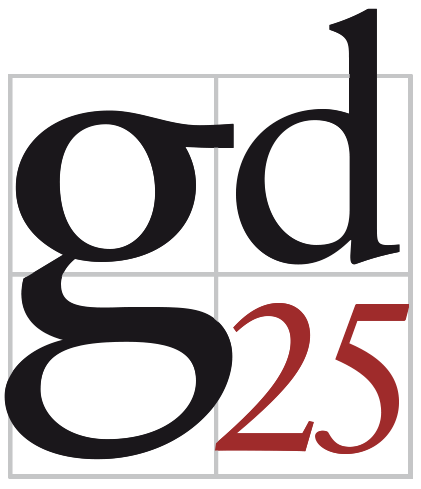GD2025 PhD School
Location
The PhD school takes place in the room Teaching Room TP42 of Linköping University Campus Norrköping, which is located on the 4nd floor of the building Täppan of Campus Norrköping.
Address:
Linköpings universitet, Campus Norrköping
Bredgatan 34, 602 47 Norrköping
Access to the room: please enter the Täppan building (main entrance from the south facing Bredgatan) and take the elevator to Floor 4.
The location is accessible by wheelchair and the coffee breaks for the PhD school are located in the same room.
Wi-Fi: please use the Eduroam network or the “LiU-guest” network.
Registration: Registration desk for the PhD school will be located right next to the lecture room TP42. The registration desk opens at 8:30 on Monday.
Google Maps Location
Campus MazeMap
Program
| Monday, September 22 | |
|---|---|
| Time | Event |
| 09:00 — 12:00 | . Information Visualization Perspective on Network Visualization |
| 09:00 — 10:30 | Lecture |
| 10:30 — 11:00 | Coffee Break |
| 11:00 — 12:00 | Exercises & Discussion |
| 12:00 — 14:00 | Individual Lunch Break |
| 14:00 — 17:00 | . Crossing number: Complexity and Algorithms |
| 14:00 — 15:30 | Lecture |
| 15:30 — 16:00 | Coffee Break |
| 16:00 — 17:00 | Exercises & Discussion |
| Tuesday, September 23 | |
|---|---|
| Time | Event |
| 09:00 — 12:00 | Dimensionality Reduction, Machine Learning, and Graph Drawing |
| 09:00 — 10:30 | Lecture |
| 10:30 — 11:00 | Coffee Break |
| 11:00 — 12:00 | Exercises & Discussion |
| 12:00 — 14:00 | Individual Lunch Break |
| 14:00 — 17:00 | . User Evaluations in Graph Drawing |
| 14:00 — 15:30 | Lecture |
| 15:30 — 16:00 | Coffee Break |
| 16:00 — 17:00 | Exercises & Discussion |
Lecturers
Title:
Information Visualization Perspective on Network Visualization
Abstract:
There are many ways to draw networks, and the choice of layout has a big impact on what people can see and understand. In this lecture, you will learn how perspectives from information visualization differ from traditional graph drawing: we will focus on how visualizations support exploration, tasks, and sensemaking. We will use BioFabric as a running example. In BioFabric, nodes are drawn as horizontal lines and edges as vertical lines, which opens up new possibilities for showing patterns and encoding additional data. We will look at recent research on layout strategies, readability, and evaluation, and see how these ideas connect to real user needs. The lecture will be followed by a hands-on exercise. You will try out layout algorithms and experiment with ways to represent multivariate data in BioFabric, discovering how different choices can change what a network reveals.
Biography:
I'm a postdoc at TU Wien, previously held a postdoc position at the University of Konstanz, and completed my doctorate at Northeastern University in Boston. My research focuses on graph drawing—particularly layered graphs, generative models, and virtual reality. I value any research project that involves a bit of creativity and artistry.
Title:
Crossing number: Complexity and Algorithms
Abstract:
The graph crossing number is the smallest number of edge crossings when drawing a given graph into the plane. It is one of the oldest metrics in graph drawing and constitutes challenging problems both in theory an practice. Even very fundamental and seemingly simple graph theoretic questions remain open since decades. We will focus on the computer science aspects of it: We will discuss the complexity of computing it even in very restricted scenarios and focus on current different algorithmic aspects (heuristics, approximations, FPT-algorithms, ILP-models). Finally, we investigate what we can and cannot do in practice.
Biography:
Markus Chimani is a full professor of Theoretical Computer Science at Osnabrück University. He studied computer science at TU Vienna, received his doctorate from TU Dortmund in 2008, and held a junior professorship of Algorithm Engineering at Friedrich Schiller University Jena before moving to Osnabrück. His research interest is in combinatorial optimization and algorithmics, combining theoretical questions with practical evaluations. This in particular includes non-planarity of graphs and questions in network design.
Title:
Dimensionality Reduction, Machine Learning, and Graph Drawing
Biography:
Daniel is a Professor of Visualisation and Data Science at Newcastle University. His research focuses on enabling visualisation and visual analytics systems to scale in the age of data science. He explores key problems in data science and AI, graph drawing, social and complex network analysis, and human-computer interaction, often within interdisciplinary contexts. His work spans the full data-to-human pipeline—from developing algorithms for visualising abstract data to conducting perceptual evaluations of these interfaces with users. His primary interests lie in visual analytics for machine learning and network visualisation.
Preliminary Title:
User Evaluations in Graph Drawing
Biography:
Camilla Forsell is an Associate Professor in evaluation methodology and visualization and works at the Division of Media and Information Technology, Linköping University. She is also director of undergraduate studies and deputy head of the division. Camilla holds a master's degree in cognitive science from Linköping University in 2003, and a doctorate in human-computer interaction from Uppsala University in 2007. She has worked at Linköping University since 2007, as an Associate Professor since 2013.





